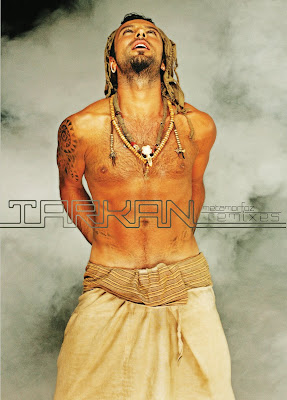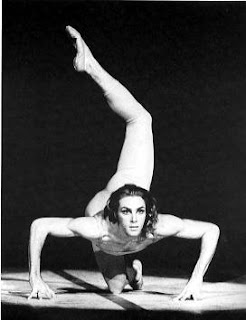

Nacido el 18 de marzo de 1930 en El Cairo, Egipto, Mahmoud Reda es un pionero de la danza teatro en Egipto. Solista, coreógrafo y director de cientos de producciones, Mahmoud Reda ha viajado en más de 60 países, realizando en el mundo de la más prestigiosa de las etapas. He has also been principal actor, dancer and choreographer in popular Egyptian films. Mahmoud Reda has been universally acclaimed for his dance with the strength of and appeal of a Gene Kelly or Fred Astaire. También ha sido actor principal, coreógrafo y bailarín en películas populares de Egipto. Mahmoud Reda ha sido universalmente aclamada por su danza con la fuerza y el atractivo de un Gene Kelly o Fred Astaire.
In 1959 he founded the first folk dance company, The Reda Band, which consisted only of 15 members , all dancers. En 1959 fundó la primera compañía de danza folclórica, El Reda Band, que consistía de sólo 15 miembros, todos los bailarines. Today,it has more than 150 talented members including dancers , musicians and technicians . The band has presented more than 300 shows including dances and folkloric songs , ballads , with different rhythm and different features creating an atmosphere of entertainment and happiness . Hoy en día, cuenta con más de 150 miembros, entre ellos talentosos bailarines, músicos y técnicos. La banda ha presentado más de 300 espectáculos incluidos los bailes folclóricos y canciones, baladas, con ritmo diferente y las diferentes características de la creación de una atmósfera de diversión y felicidad. The band also participated in two musical movies : " Mid year vacation " and " Love in Elkarnak". La banda también participó en dos películas musicales: "vacaciones de mitad de año" y "Amor en Elkarnak". Reda Band is endorsed by the Egyptian Government "as a band capable of representing the Egyptian Folklore both in music and dances." Reda banda está avalada por el Gobierno de Egipto "como una banda capaz de representar el folclore egipcio, tanto en la música y las danzas". The group traveled throughout Egypt collecting folk dances, and then toured the world, promoting those dances as fine art, worthy of respect. El grupo viajó por Egipto recogida de danzas folclóricas y, a continuación, recorrió el mundo, la promoción de las danzas como obras de arte, digna de respeto.
As a soloist, choreographer and director, Mahmoud Reda made four world tours to 58 countries with his troupe. Como solista, coreógrafo y director, Mahmoud Reda realizado cuatro giras mundiales a 58 países con su compañía. He performed on the world's most prestigious stages such as Carnegie Hall (NY, USA), Albert Hall (London, UK), Congress Hall (Berlin, Germany), Stanislavsky & Gorky Theaters (Moscow, USSR), Olympia (Paris, France) and the United Nations (NY & Geneva). Actuó en el mundo de las etapas más prestigiosas como el Carnegie Hall (NY, EE.UU.), Albert Hall (Londres, Reino Unido), Palacio de Congresos (Berlín, Alemania), Stanislavsky y Gorky Teatros (Moscú, URSS), Olympia (París, Francia) y las Naciones Unidas (Nueva York y Ginebra). The Reda Troupe has performed for many world leaders and Heads of states. El Reda Troupe ha realizado durante muchos líderes mundiales y jefes de los estados. Mr. Reda received Egypt's Order of Arts and Science in 1967, The Star of Jordan in 1965 and the Order of Tunisia in 1973. Sr Reda Egipto recibió la Orden de las Artes y las Ciencias en 1967, la estrella de Jordania en 1965 y la Orden de Túnez en 1973. In 1999, he was honored by the International Dance Committee/Unesco and by the International Conference on Middle Eastern Dance in May 2001. En 1999, fue honrado por el Comité Internacional de la Danza-Unesco y por la Conferencia Internacional sobre Oriente Medio de Danza en mayo de 2001.
Mahmoud Reda draws from techniques of jazz, ballet, Hindu dance and folkloric dance from the USSR. His work has shaped and influenced what is known today as Oriental Dance (Raks Sharki). Many former troupe members include master teachers Raqia Hassan, Momo Kadous, Mo Geddawi and Yosry Sherif. Mahmoud Reda se basa en técnicas de jazz, ballet, danza hindú y danza folklórica de la URSS. Su obra ha influido en forma y lo que se conoce hoy como la Danza Oriental (Sharki RAKS). Troupe Muchos ex miembros incluyen a profesores Raqia Hassan, Momo Kadous, Mo Geddawi y Yosry Sheriff.
Born on 18 March 1930 in Cairo, Egypt, Mahmoud Reda is a pioneer of dance theatre in Egypt. Soloist, choreographer and director of hundreds of productions, Mahmoud Reda has toured in more than 60 countries, performing on the world's most prestigious stages. He has also been principal actor, dancer and choreographer in popular Egyptian films. Mahmoud Reda has been universally acclaimed for his dance with the strength of and appeal of a Gene Kelly or Fred Astaire.
In 1959 he founded the first folk dance company, The Reda Band, which consisted only of 15 members , all dancers. Today,it has more than 150 talented members including dancers , musicians and technicians . The band has presented more than 300 shows including dances and folkloric songs , ballads , with different rhythm and different features creating an atmosphere of entertainment and happiness . The band also participated in two musical movies : " Mid year vacation " and " Love in Elkarnak". Reda Band is endorsed by the Egyptian Government "as a band capable of representing the Egyptian Folklore both in music and dances." The group traveled throughout Egypt collecting folk dances, and then toured the world, promoting those dances as fine art, worthy of respect.
As a soloist, choreographer and director, Mahmoud Reda made four world tours to 58 countries with his troupe. He performed on the world's most prestigious stages such as Carnegie Hall (NY, USA), Albert Hall (London, UK), Congress Hall (Berlin, Germany), Stanislavsky & Gorky Theaters (Moscow, USSR), Olympia (Paris, France) and the United Nations (NY & Geneva). The Reda Troupe has performed for many world leaders and Heads of states. Mr. Reda received Egypt's Order of Arts and Science in 1967, The Star of Jordan in 1965 and the Order of Tunisia in 1973. In 1999, he was honored by the International Dance Committee/Unesco and by the International Conference on Middle Eastern Dance in May 2001.
Mahmoud Reda draws from techniques of jazz, ballet, Hindu dance and folkloric dance from the USSR. His work has shaped and influenced what is known today as Oriental Dance (Raks Sharki). Many former troupe members include master teachers Raqia Hassan, Momo Kadous, Mo Geddawi and Yosry Sherif.





